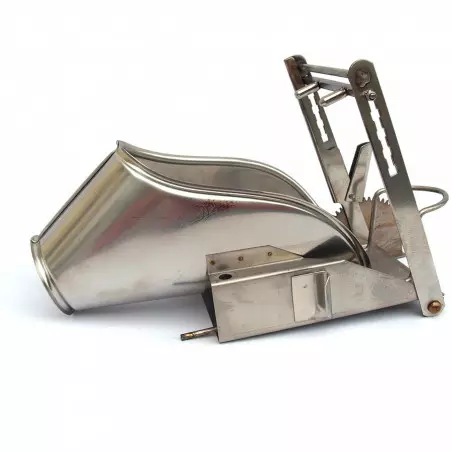Surgical castration of male piglets without analgesia is a painful procedure. This prospective, randomized and double-blinded study aimed to evaluate the analgesic effects of four different local anesthetics for piglet castration during the first week of life. In total, 54 piglets aged 3 to 7 days were distributed into 6 treatment groups: handling (H); castration without pain relief (sodium chloride, NaCl); and castration with a local anesthetic: 4% procaine (P), 2% lidocaine (L), 0.5% bupivacaine (B) or 20 mg/ml mepivacaine (M). By excluding stress and fear as disruptive factors via a minimum anesthesia model, all piglets received individual minimum alveolar concentration (MAC) isoflurane anesthesia. Twenty minutes before castration, all treatment groups except group H received one injection per testis. Then, 0.5 ml of a local anesthetic or NaCl was injected intratesticularly (i.t.), and 0.5 ml was administered subscrotally. Acute physiological responses to noxious stimuli at injection and castration were evaluated by measuring blood pressure (BP), heart rate (HR), cortisol, epinephrine, norepinephrine and chromogranin A (CgA); limb movements were quantified.
The results confirm that castration without analgesia is highly painful. Surgical castration without pain relief revealed significant changes in mean arterial blood pressure (MAP) and HR. Local anesthetic administration significantly reduced changes in BP and HR associated with castration. Piglets receiving a preoperative local anesthetic exhibited the fewest limb movements during castration, while the NaCl group exhibited the most. Injection itself was not associated with significant changes in MAP or HR. However, many piglets exhibited limb movements during injection, indicating that the injection itself causes nociceptive pain. No significant differences were found between groups regarding parameters of plasma cortisol, catecholamines and CgA.

In conclusion, all four local anesthetics administered are highly effective at reducing signs of nociception during castration under light isoflurane anesthesia. However, injection of a local anesthetic seems to be painful.
Saller AM, Werner J, Reiser J, Senf S, Deffner P, et al. Local anesthesia in piglets undergoing castration—A comparative study to investigate the analgesic effects of four local anesthetics on the basis of acute physiological responses and limb movements. PLOS ONE. 2020; 15(7): e0236742. https://doi.org/10.1371/journal.pone.0236742





